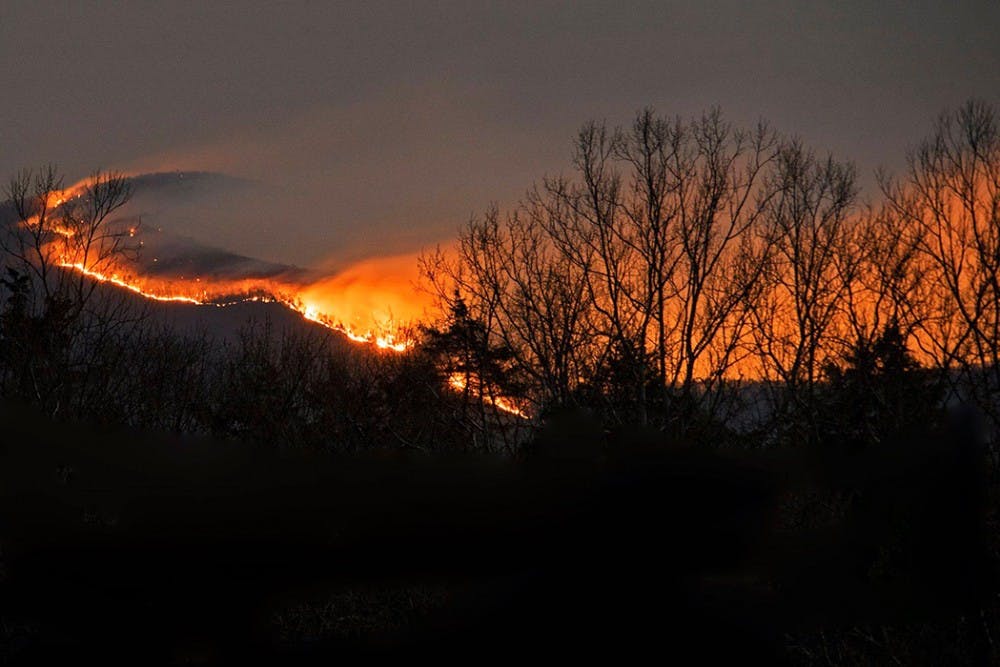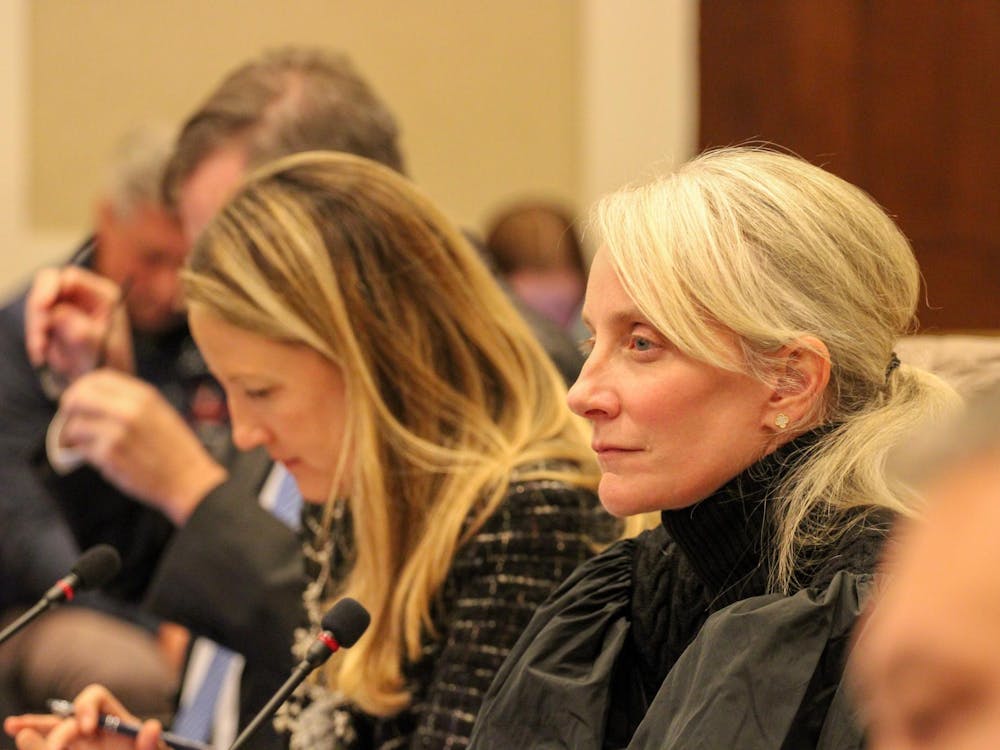A wildfire in Shenandoah National Park is the reason behind the smoky, hazy air that has loomed over Charlottesville for the past week.
Rocky Mount Fire 2016, the official name of the wildfire, began last Saturday and has been scorching southern parts of the national park all week. Sally Hurlbert, a park ranger in Shenandoah National Park, said the cause of the fire is still unknown.
“It is under investigation, but is believed to be human caused,” Hurlbert said in an email statement.
Hurlbert said fuel, such as pine needles and leaves, rugged topography and the weather all contribute to wildfires.
“The temperature has been high, the humidity has been unseasonably dry and the wind speed has been variable,” Hurlbert said. “All of these factors have combined to make this fire expand rapidly and become a complex fire to fight.”
Wildfires are more difficult to put out than structure fires, largely because of the speed at which they expand, Hurlbert said.
“We can't just spray water on it to put it out like a house fire,” Hurlbert said. “When the fire was first reported to us, it was already 70 acres, so we couldn't directly attack it. We had to indirectly attack it by trying to put a containment line around it using roads, natural barriers and constructed fire lines.”
Hurlbert said the goal is to keep the fire within the containment zone. The park is currently working with partners such as the Virginia Department of Forestry, the U.S. Forest Service, the U.S. Fish and Wildlife Service, the Bureau of Indian Affairs, several state forestry agencies, Rockingham County Fire and Rescue and the Grottoes Volunteer Fire Department. Additionally, over 342 personnel from 33 states, the District of Columbia and Puerto Rico have been dispatched as a result of the fire.
On Saturday, the U.S. Park Police provided their helicopter to aid with putting out the blaze. The helicopter transported fire personnel equipped with an infrared camera that would show fire hot spots needing attention from firefighters as the weather dries out this week.
A press release from the Southern Area Incident Management Red Team said the increased humidity, precipitation and lower temperatures on Saturday gave fire crews the opportunity to mop up and extend all fire lines including along Skyline Drive. The fire is burning in mountain laurel, pine and oak forests with heavier than average leaf litter and duff.
Several property owners between the Lewis Peak Trail and Madison Run Road have given permission for fire crews to improve a series of old jeep roads and trails that run through their respective properties to build a solid contingency line to hold and contain the southwest corner of the fire, should the need arise.
The blaze has led to multiple trail closures in the area. The Appalachian Trail is closed from Blackrock Gap to Powell Gap, and the Skyline Drive is closed from Swift Run Gap to Blackrock Gap.
Firefighters planned to burn out vegetation between containment lines and the main fire front to bolster containment, according to a Facebook post by the Shenandoah National Park posted Sunday. A test fire on the west side of the fire in the Big Run area was created from the ground.
The Facebook post also said the park started aerial ignition on the southeast side of the fire in the Eppert Hollow area. Residents in the area may see increased smoke as a result of the actions. Although the total fire acreage is 8,952 acres, almost 43 percent of it has been contained as of Friday.
Hurlbert said Rocky Mount, the area where the fire started, has not burned for over 80 years.
“This is a place where low level fires should occur naturally every three to seven years,” Hurlbert said. “As a result of the fire, organic material and nutrients have been recycled into the soil, which will stimulate new plant growth.”







